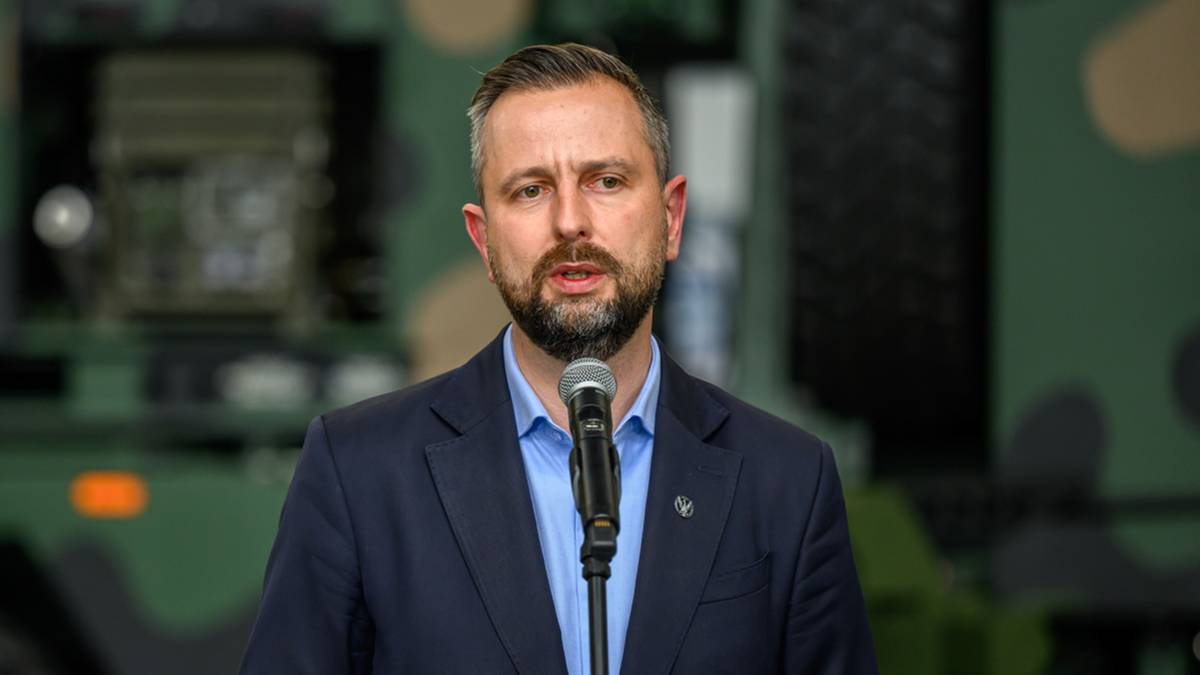It was 1 of the heaviest and bloodiest battles of the 1939 defensive war. On the night of September 11, 1st Legion Infantry Division commanded by Gen. Wincenty Kowalski captured Kałuszyn previously mastered by the 3rd Reich troops. They then escaped from the German lap. With victory, the division could proceed the fight.
Jubilee of the twenty-fiveth anniversary of the 1st Legion Infantry Division in Vilnius and 15th anniversary of the 14th Jazlów Regiment in Lviv. Defilada before the president of the Republic of Poland Ignacy Mościcki (on the stands on the right). photograph by NAC
"We fell into Kałuszyn's first fences – there were more Germans here, moving like rabbits through fences in gardens and orchards. [...] There was a large group of Germans moving from us – from respective dozen. He tried to halt them a German officer – he shouted something. respective Germans turned around and started shooting at us" – so Lt. Andrzej Żiliński, commander of the Uwan squadron from the 1st Legion Infantry Division, described the charge on Kałuszyn on the night of 11th to 12th September 1939.
During the defensive war, the 1st Infantry Division under General Wincenty Kowalski fought as part of the “Wyszków” Operational Group. The unit began its combat way in the Narwi and Wyszkow area. She then participated in clashes about the Pułtusk and the Gnojno. She was then withdrawn to the Bug line and fought over Wyszków. On 11 September, General Kowalski was ordered to retreat from the lower Bug to the southeast.
On the 1st Division road was Kałuszyn, a town close Minsk Mazowiecki, about 50 km east of Warsaw. Unfortunately, as the Polish patrols established, the village was occupied by German troops. – These were the invading units from the north of the 44th Infantry Regiment of the 11th Infantry Division and troops of the Armoured Division “Kempf” – says Jarosław Jagodinski, historian, past investigator World War II.
Enemy units cut off the retreat way for Polish troops – 1st Division was in the lap. General Kowalski decided to break through the German cordon at night in the Kałuszyna area. The battles began with the night charge of the 4th squadron of the 11th Ulan Regiment under Lieutenant Żyliński. It was a signal to the infantry attack.
The 6th Legion Infantry Regiment followed behind the owlans. However, the soldiers, against the strong opposition of the opponent, were incapable to break through the German defense. "At the same time, the 3rd Battalion of the 6th Infantry Regiment under the command of Colonel Jan Kasztelowicz attacked hill 194,8 above the area," the historian describes. At dawn on September 12, the hill was captured, which allowed the general assault on Kałuszyn to begin. “We were walking quietly towards the town. In the suburbs, we were ordered to prepare grenades and bayonet for weapons. A minute later, a court day began there – rape, moaning, shooting. As we entered the market, it was a fear to look at the names of German dead people" – the associate of the fencing fights reported. Louis Skrebutenas in the 1970 Polish Radio broadcast.
Jubilee of the twenty-fiveth anniversary of the 1st Legion Infantry Division in Vilnius and 15th anniversary of the 14th Jazlów Regiment in Lviv. Celebrations in Łukiski Square, August 1939
After all-night struggles, the city was in the hands of Poles. – However, the 1st Division was inactive in the lap, and it was not until the night of 12th to 13th September that the ringing of German troops around it was interrupted,” Jagzinski emphasized. In the fighting, the 6th Infantry Regiment lost a 3rd of its state, or about 600 soldiers. Almost a 1000 soldiers were killed on the German side, and the German 44th Infantry Regiment was almost completely broken.
The conflict of Kałuszyn was 1 of the fewer winning battles of the defensive war. By getting out of lap 1 The division could have continued the fight. Her soldiers were inactive fighting at Seroczyn, Oleśnica and Krasnobrod. The remnants of the formation were broken up on 23 September in the vicinity of Tomaszów Lubelski. “The heroic attitude of this unit during the 1939 run raised the respect of the Germans, who referred to it as “The Iron Division”, says the historian.
Polish soldiers are buried in the Kałuszyn War Cemetery. In 1986, General Kowalski's ashes were besides buried there. The 1939 conflict commemorates the monument of the Golden Ulan, which was founded on the 75th anniversary of the conflict by Jan Żiliński, boy of Lieutenant Żiliński.




![Nie spodobało się, iż nazwałam się imamką [Rozmowa z Seyran Ateş]](https://cdn.oko.press/cdn-cgi/image/trim=398;0;424;0,width=1200,quality=75/https://cdn.oko.press/2025/08/AFP__20170728__R207J__v1__HighRes__GermanyFranceReligionIslamMosque.jpg)